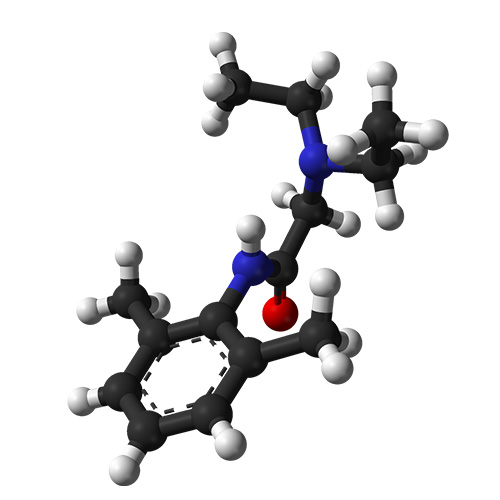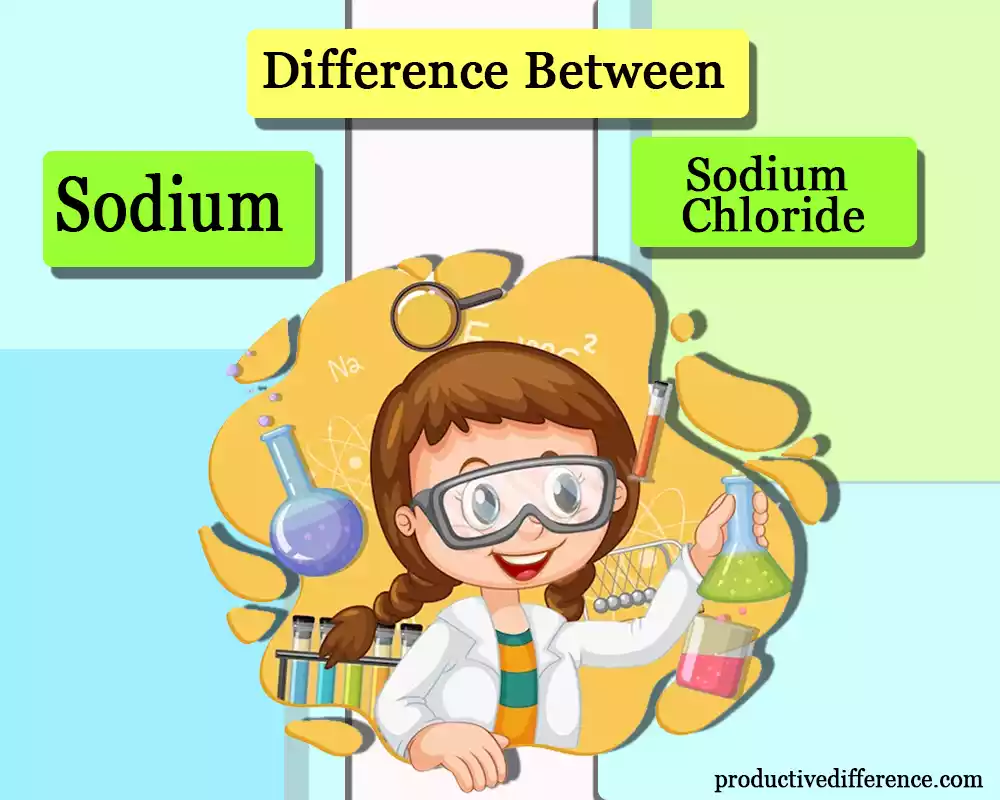Definition of Lidocaine
Lidocaine belongs to the class of local anesthetic medications and is an injectable synthetic compound commonly used as an anesthetic agent for localized pain relief and discomfort. Lidocaine works by blocking nerve signals to the brain that relay pain information thereby providing temporary pain relief in one area of use.
Lidocaine comes in various formulations including injectable solutions, gels, creams ointments patches enabling various methods of administration according to individual use; commonly utilized during medical and dental procedures as well as managing conditions like arrhythmias in order to alleviate discomfort while improving patient comfort.

Definition of Tetracaine
Tetracaine, an ester-based local anesthetic drug, can temporarily reduce sensation in an area. Applied topically it may provide temporary numbness or loss of feeling to specific parts of the body. Tetracaine works by temporarily blocking nerve signals responsible for transmitting pain sensations from reaching the brain, offering local anesthesia. It may be applied topically or injected directly near its target site for maximum effect.
Tetracaine is known for its rapid onset and relatively long duration of action, making it suitable for various medical and dental procedures. Furthermore, this anesthesia solution has long been utilized in ophthalmology as surface anesthesia of the eye for exams or surgeries; due to potential side effects and precautions associated with its usage it should always be under healthcare professional’s direction and supervision.

Importance of understanding the difference between Lidocaine and Tetracaine
Understanding the difference between Lidocaine and Tetracaine is crucial for healthcare professionals, patients, and individuals involved in medical and dental fields.
Here are some reasons why it is important to comprehend the distinctions between these two local anesthetics:
- Medical and Dental Applications: Lidocaine and Tetracaine have different applications and uses in various medical and dental procedures. Understanding their specific indications and efficacy helps healthcare providers choose the most appropriate anesthetic for a particular situation, ensuring optimal patient care and pain management.
- Potency and Duration: Lidocaine and Tetracaine differ in terms of their potency and duration of action. Lidocaine is known for its moderate potency and intermediate duration, making it suitable for a wide range of procedures. On the other hand, Tetracaine is more potent and has a longer duration, which may be advantageous for certain specialized procedures.
- Onset of Action: The speed at which an anesthetic takes effect can be crucial in different clinical scenarios. Lidocaine generally has a rapid onset of action, providing quick pain relief, while Tetracaine may take slightly longer to produce its numbing effect.
- Formulations and Administration: Lidocaine and Tetracaine are available in various formulations, such as injectable solutions, gels, creams, and patches. Understanding their specific formulations and routes of administration ensures appropriate usage and optimal outcomes.
- Side Effects and Precautions: Lidocaine and Tetracaine may have different side effect profiles and precautions associated with their use. Being aware of these differences helps healthcare professionals and patients make informed decisions and manage any potential risks or adverse reactions.
- Patient Comfort and Safety: The appropriate selection and administration of local anesthetics contribute to patient comfort and safety during medical and dental procedures. Understanding the differences between Lidocaine and Tetracaine allows healthcare providers to tailor anesthesia plans to meet individual patient needs, ensuring effective pain management and minimizing risks.
- Optimal Treatment Planning: Knowledge of the differences between Lidocaine and Tetracaine enables healthcare professionals to develop comprehensive treatment plans that consider the specific properties and characteristics of each anesthetic. This facilitates efficient and targeted anesthesia administration, enhancing the overall quality of care provided.
Understanding the differences between Lidocaine and Tetracaine is vital for healthcare professionals to make informed decisions regarding anesthesia selection, optimize patient comfort and safety, and achieve successful outcomes in medical and dental procedures.
Similarities between Lidocaine and Tetracaine
Lidocaine and Tetracaine, both being local anesthetics, share several similarities. These include:
- Local Anesthetic Properties: Lidocaine and Tetracaine belong to a class of medications called local anesthetics, meaning they work by blocking nerve signals in specific parts of the body to produce temporary numbness or sensation loss in that location.
- Mechanism of Action: Lidocaine and Tetracaine act by inhibiting the influx of sodium ions into nerve cells, thereby preventing the generation and conduction of nerve impulses. This mechanism of action helps in numbing the area where the anesthetic is applied or injected.
- Medical and Dental Applications: Both Lidocaine and Tetracaine find application in various medical and dental procedures. They are used for local anesthesia in surgeries, dental work, biopsies, wound suturing, and other minor invasive procedures.
- Side Effects and Precautions: Lidocaine and Tetracaine may each exhibit unique side effects and precautions; however, many potential adverse reactions and precautions remain similar across both medications. Common adverse reactions for Lidocaine include allergic reactions, skin irritation, dizziness, headache, cardiovascular effects (such as low blood pressure or an irregular heart rhythm) as well as systemic toxicities like low blood pressure. As with all medication classes, precautions such as monitoring systemic toxicity also apply across these drugs.
- Availability of Different Formulations: Both Lidocaine and Tetracaine are available in various formulations to suit different administration methods and purposes. They can be found as injectable solutions, topical gels, creams, ointments, and patches, providing flexibility in their use.
- Prevalence in Topical Use: Both Lidocaine and Tetracaine are frequently used in topical form for superficial anesthesia or numbing of the skin. They are commonly employed before procedures such as minor skin surgeries, dermal filler injections, or laser treatments to minimize discomfort.
- Widely Studied and Approved: Lidocaine and Tetracaine have been extensively researched and are widely accepted as safe and effective local anesthetics. They have received regulatory approval from health authorities for their specific indications and are commonly used in medical practice.
Lidocaine and Tetracaine may share many similarities; however, there are also distinct distinctions in their chemical structures, potencies, duration of action onset onset medical applications among other areas. Understanding both similarities and variations for safe usage clinical practice.
Differences between Lidocaine and Tetracaine
Lidocaine and Tetracaine, though belonging to the same class of local anesthetics, have several notable differences.
These include:
- Chemical Structure: Lidocaine is an amide local anesthetic, while Tetracaine is an ester local anesthetic. This structural difference influences their metabolism and potential for allergic reactions.
- Potency and Duration of Action: Tetracaine is generally more potent than Lidocaine, meaning it requires a lower concentration to achieve a similar anesthetic effect. Tetracaine also has a longer duration of action compared to Lidocaine, providing prolonged anesthesia in the area of application.
- Onset of Action: Lidocaine typically offers faster action onset compared to Tetracaine; Lidocaine typically begins working within several minutes while Tetracaine may take more time before reaching its maximum anesthetic effect.
- Medical and Dental Applications: Lidocaine is commonly used for infiltration anesthesia, nerve block anesthesia, epidural anesthesia, and topical anesthesia. Tetracaine is often employed for spinal anesthesia, topical anesthesia (especially in ophthalmology), and less frequently for infiltration anesthesia.
- Formulations and Administration: Lidocaine can be found in numerous formulations, from injectable solutions and gels, creams, ointments and patches to injectable solutions and topical gels and ointments. Tetracaine tends to be found more in topical forms (gels ointments) but may also be utilized during more specialized procedures as an injectable solution.
- Side Effects and Precautions: Lidocaine and Tetracaine may share similar adverse events such as skin irritation and allergic reactions. Their frequency and severity of specific adverse events may differ significantly, along with potential precautions or contraindications associated with their use.
- Safety Profiles: Lidocaine and Tetracaine both differ significantly when it comes to metabolism and allergic reactivity; due to this fact they each present with unique risks of allergic reaction or systemic toxicity; Lidocaine generally offers greater margin of safety; Tetracaine poses higher risks in terms of allergic reaction reactivity as well as systemic toxicity risks.
An accurate understanding of Lidocaine and Tetracaine differencies should be obtained through consultation with healthcare providers; including appropriate use, dosages and potential interactions with other medications.
Comparison chart
Here’s a comparison chart summarizing the key differences between Lidocaine and Tetracaine:
| Aspect | Lidocaine | Tetracaine |
|---|---|---|
| Chemical Structure | Amide local anesthetic | Ester local anesthetic |
| Potency | Moderately potent | Highly potent |
| Duration of Action | Intermediate duration | Long duration |
| Onset of Action | Rapid onset | Slower onset |
| Medical Applications | Infiltration anesthesia, nerve block anesthesia, epidural anesthesia, topical anesthesia | Spinal anesthesia, ophthalmic anesthesia, topical anesthesia (limited use) |
| Dental Applications | Local anesthesia for dental procedures | Local anesthesia for dental procedures |
| Formulations | Injectable solutions, topical gels, creams, ointments, patches | Topical gels, ointments, injectable solutions |
| Side Effects | Localized reactions, rare systemic effects | Localized reactions, rare systemic effects |
| Precautions | Allergy to local anesthetics, certain heart conditions, liver/kidney disease | Allergy to local anesthetics, sensitivity to PABA or derivatives, certain skin conditions, eye use precautions |
Medical and Dental Applications
Medical and dental applications of Lidocaine and Tetracaine vary based on their specific properties and characteristics.
Here are the commonly encountered uses for each local anesthetic:
Lidocaine:
- Topical Use: Lidocaine is widely used topically to provide surface anesthesia or numbing. It is applied to the skin or mucous membranes before minor procedures such as suturing wounds, inserting IV catheters, or performing laser treatments.
- Infiltration Anesthesia: Lidocaine is commonly used for infiltration anesthesia, where it is injected directly into the tissues near the surgical site to numb a specific area.
- Nerve Block Anesthesia: Lidocaine is used for nerve block anesthesia, where it is injected around specific nerves to block sensation in a larger area of the body. It is often used in regional anesthesia techniques, such as brachial plexus blocks or intercostal nerve blocks.
- Epidural Anesthesia: Lidocaine can be used as part of an epidural anesthesia for pain relief during childbirth or surgical procedures involving the lower abdomen, pelvis or lower extremities.
Tetracaine:
- Topical Use: Tetracaine is commonly used topically, especially in ophthalmology, for surface anesthesia of the eye before procedures such as tonometry, foreign body removal, or minor eye surgeries.
- Spinal Anesthesia: Tetracaine is used for subarachnoid anesthesia – also referred to as spinal anesthesia – during surgical procedures involving lower abdomen, pelvis or lower extremity procedures. When administered intralumbarly it provides anesthesia below its point of injection.
- Ophthalmic Use: Tetracaine is occasionally used in ophthalmology for more prolonged and profound corneal anesthesia during certain eye examinations, such as fluorescein staining or corneal foreign body removal.
Lidocaine and Tetracaine should be used accordingly with individual patient characteristics, procedures requirements and healthcare provider preferences in mind. A healthcare professional should determine how best to use these local anesthetics based on each person’s individual requirements as well as any clinical circumstances present at that moment in time.
Formulations and Administration
Lidocaine and Tetracaine are available in various formulations to suit different administration methods and purposes.
Here are the common formulations and routes of administration for each local anesthetic:
Lidocaine:
- Injectable Formulations: Lidocaine is available as an injectable solution. It can be administered intravenously (IV) for systemic effects or via local infiltration or nerve block techniques for targeted anesthesia. Different concentrations of injectable Lidocaine are available to accommodate various procedures and patient needs.
- Topical Formulations: Lidocaine can also be purchased in topical forms such as gels, creams, ointments and patches that can be applied directly to skin or mucous membranes for surface anesthesia. Lidocaine topicals are frequently utilized during minor procedures like wound suturing, IV line placement or dermatological treatments.
Tetracaine:
- Topical Formulations: Tetracaine is primarily available in topical formulations such as gels and ointments. These are applied to the surface of the skin or mucous membranes to provide local anesthesia. Tetracaine gel is commonly used in ophthalmology for eye procedures, while Tetracaine ointment may be used for other superficial anesthesia purposes.
- Injectable Formulations: Tetracaine is also available as an injectable solution, although its use in this form is less common compared to Lidocaine. Injectable Tetracaine may be used for specialized procedures, such as spinal anesthesia, where it is injected into the cerebrospinal fluid for regional anesthesia.
When taking Lidocaine or Tetracaine, it is crucial that the appropriate dosage and administration guidelines provided by healthcare professionals are strictly observed.
Side Effects and Precautions
Both Lidocaine and Tetracaine, as local anesthetics, may have side effects and precautions associated with their use. While some side effects and precautions are common to both medications, there may be differences in the frequency or severity of specific adverse events.
Here are the general side effects and precautions for Lidocaine and Tetracaine:
Lidocaine:
- Localized Side Effects: Common localized side effects of Lidocaine include temporary numbness, redness, swelling, or itching at the site of application or injection. These effects are usually mild and resolve on their own.
- Systemic Side Effects: Lidocaine may cause systemic side effects if administered in high concentrations to the bloodstream, including dizziness, lightheadedness, confusion, blurred vision, ringing in the ears, tremors or seizures as well as cardiac side effects like slow heart rates or irregular heartbeat.
- Precautions and Contraindications: Lidocaine should only be administered with extreme care if patients exhibit allergy or hypersensitivity to local anesthetics, had previous allergic reactions from similar medicines or have certain heart conditions such as heart block or severe heart failure. Liver or kidney diseases could significantly lower clearance rates of Lidocaine; thus compromising its effects over time.
Tetracaine:
- Localized Side Effects: Common localized side effects of Tetracaine include temporary stinging, burning, or itching at the site of application. These effects are typically mild and transient.
- Systemic Side Effects: Though rare, Tetracaine may cause systemic side effects when taken in large doses. These side effects could include headaches, dizziness, lightheadedness, changes to vision or elevated blood pressure as well as allergic reactions or adverse reactions that require medical treatment.
- Precautions and Contraindications: Tetracaine should be used with caution in patients with a history of hypersensitivity to local anesthetics or ester-type medications. It should be avoided in patients with known sensitivity to para-aminobenzoic acid (PABA) or its derivatives. Tetracaine should not be used in patients with open wounds, damaged or infected skin, or near the eyes if not specifically formulated for ophthalmic use.
At times it may be wise to seek professional guidance in understanding all potential side effects and precautions associated with Lidocaine and Tetracaine medication use, including specific considerations based on an individual patient’s characteristics or medical history.
Conclusion
Lidocaine and Tetracaine are both local anesthetics with distinct characteristics and applications. While they share some similarities as local anesthetics, there are significant differences between the two. Understanding these differences is essential for healthcare professionals, patients, and individuals involved in medical and dental fields. Key areas where Lidocaine and Tetracaine differ include their chemical structure, potency, duration of action, onset of action, medical and dental applications, formulations, and potential side effects and precautions.
Lidocaine is commonly used for infiltration anesthesia, nerve block anesthesia, epidural anesthesia, and topical anesthesia. It is available in injectable and topical formulations, offering versatility in its administration. Lidocaine is known for its moderate potency, intermediate duration, and rapid onset of action.


